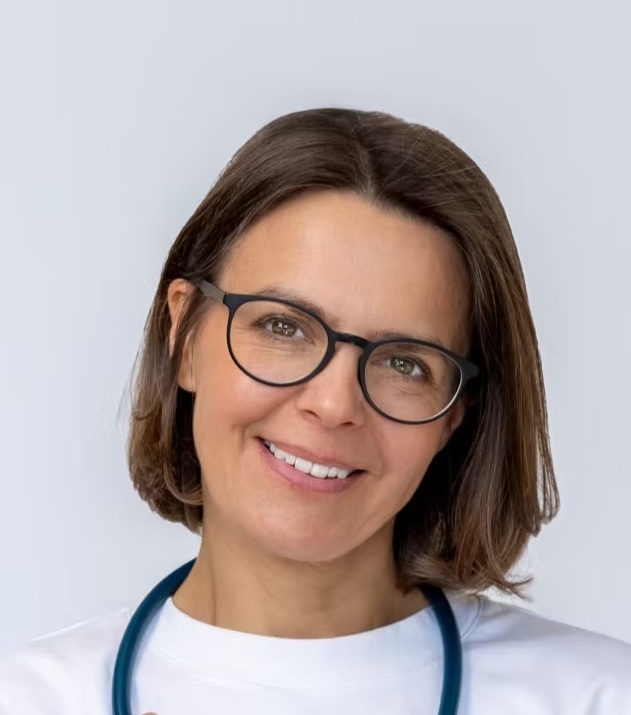Live longer, live better: New Approaches to Extending Life Expectancy
Revolutionary concepts and technologies to promote health and longevity

Alexander Sinn
As our understanding of aging grows, researchers are discovering new and fascinating ways to increase life expectancy — i.e. the amount of time you can spend in good health and free from chronic diseases. Traditional approaches such as diet and physical activity remain crucial, but the latest scientific findings open up new perspectives for a longer and healthier life. In this article, we present three exciting concepts that have the potential to revolutionize our understanding of aging and health: The information theory of aging, the lesser-known characteristics of aging, and the futuristic idea of producing organs on demand.
1. The information theory of aging
The information theory of aging is a breakthrough concept that challenges the conventional view of aging. This theory, developed by scientists such as Dr. Alex Zhavoronkov, states that aging is primarily due to a gradual decrease in the reliability and accuracy of information stored in our cells. Over time, errors in the transmission and interpretation of genetic and epigenetic Information leading to cellular dysfunction and the onset of age-related diseases.
This theory suggests that aging is essentially a problem of data. Similar to how errors in digital data can lead to system failures in computers, errors in biological data can also disrupt cellular processes and contribute to the aging process. Researchers are currently investigating ways to counteract this loss of information. This includes identifying and correcting errors in DNA replication and repair, improving the reliability of epigenetic changes, and developing strategies to maintain cellular communication pathways.
The theory of the information theory of aging processes offers new perspectives on the causes of age-related decline and provides new starting points for therapeutic interventions. If successful, this approach could slow down or even reverse the aging process at the cellular level, thus promoting a longer and healthier life span.
2. Other signs of aging
The concept of aging characteristics proposed by Dr. Judith Campisi, Professor of Biogerontology at the Buck Institute for Research on Aging, identifies several biological processes that contribute to aging and age-related diseases. Although this concept has attracted a lot of attention, there is also a lesser-known group of traits that could also play a crucial role in determining the lifespan. These additional features include:
Adapting to stress
Cells and organisms have complicated systems to respond to stress factors. However, these mechanisms become less efficient as we age. Restoring cells' ability to adapt could increase resilience and improve overall health.
Epigenetic changes
Changes in the epigenetic marks that the gene expression regulate, are associated with aging. Understanding and reversing these changes could alleviate age-related diseases and extend lifespan.
Proteostasis
The correct folding and conversion of proteins are crucial for cell functions. Maintaining proteostasis becomes increasingly difficult with age and contributes to the development of neurodegenerative diseases and other age-related conditions.
Nutrient sensors
Signaling pathways to detect the availability of nutrients are important for the aging process. Influencing these signaling pathways through diet or medication could influence longevity.
By exploring these little-known characteristics, researchers can identify new ways of intervention and gain a more comprehensive understanding of the aging process. The targeted influence of these additional factors in addition to the known characteristics could lead to more effective strategies to extend life expectancy and promote healthy aging.
3. Bodies on call: A glimpse into the future
While regenerative medicine has already made considerable progress, the concept of “organ breeding on demand” is a futuristic vision that could have profound effects on health. Organ transplants have been a life-saving procedure for a long time, but the limited availability of donor organs and the risk of rejection reactions pose a major challenge.
Researchers are investigating various approaches to overcome these problems and produce functional organs in the laboratory. Techniques such as tissue engineering and 3D bioprinting enable scientists to create multi-layered structures that mimic the complexity of human organs. By using the patient's own cells to produce these organs, the risk of rejection is minimized.
The ability to produce organs on demand could not only address the shortage of donor organs, but also revolutionize the treatment of age-related diseases. Degenerative diseases of organs such as the heart, liver and kidneys could be treated by replacing damaged tissue with substitute material grown in a laboratory. This approach could not only extend life expectancy but also drastically improve the quality of life of people with debilitating diseases.
We're at a point where scientific discovery is expanding our understanding of aging through innovative theories, hidden properties, and breakthrough technologies. The information theory of aging challenges our idea of cell decay, and lesser-known characteristics of aging reveal which factors can contribute to maintaining health. The ability to generate organs as needed opens up the prospect of a future in which age-related diseases can be treated precisely and effectively.
Despite challenges on the way to practical application, these concepts are the latest state of research and offer promising prospects for extending life expectancy. Scientists continue to search for the secrets of aging, and the possibility of a longer life in good health is becoming a reality for people all over the world.
References
Publiziert
1.7.2024
Kategorie
Science

Experte
As our understanding of aging grows, researchers are discovering new and fascinating ways to increase life expectancy — i.e. the amount of time you can spend in good health and free from chronic diseases. Traditional approaches such as diet and physical activity remain crucial, but the latest scientific findings open up new perspectives for a longer and healthier life. In this article, we present three exciting concepts that have the potential to revolutionize our understanding of aging and health: The information theory of aging, the lesser-known characteristics of aging, and the futuristic idea of producing organs on demand.
1. The information theory of aging
The information theory of aging is a breakthrough concept that challenges the conventional view of aging. This theory, developed by scientists such as Dr. Alex Zhavoronkov, states that aging is primarily due to a gradual decrease in the reliability and accuracy of information stored in our cells. Over time, errors in the transmission and interpretation of genetic and epigenetic Information leading to cellular dysfunction and the onset of age-related diseases.
This theory suggests that aging is essentially a problem of data. Similar to how errors in digital data can lead to system failures in computers, errors in biological data can also disrupt cellular processes and contribute to the aging process. Researchers are currently investigating ways to counteract this loss of information. This includes identifying and correcting errors in DNA replication and repair, improving the reliability of epigenetic changes, and developing strategies to maintain cellular communication pathways.
The theory of the information theory of aging processes offers new perspectives on the causes of age-related decline and provides new starting points for therapeutic interventions. If successful, this approach could slow down or even reverse the aging process at the cellular level, thus promoting a longer and healthier life span.
2. Other signs of aging
The concept of aging characteristics proposed by Dr. Judith Campisi, Professor of Biogerontology at the Buck Institute for Research on Aging, identifies several biological processes that contribute to aging and age-related diseases. Although this concept has attracted a lot of attention, there is also a lesser-known group of traits that could also play a crucial role in determining the lifespan. These additional features include:
Adapting to stress
Cells and organisms have complicated systems to respond to stress factors. However, these mechanisms become less efficient as we age. Restoring cells' ability to adapt could increase resilience and improve overall health.
Epigenetic changes
Changes in the epigenetic marks that the gene expression regulate, are associated with aging. Understanding and reversing these changes could alleviate age-related diseases and extend lifespan.
Proteostasis
The correct folding and conversion of proteins are crucial for cell functions. Maintaining proteostasis becomes increasingly difficult with age and contributes to the development of neurodegenerative diseases and other age-related conditions.
Nutrient sensors
Signaling pathways to detect the availability of nutrients are important for the aging process. Influencing these signaling pathways through diet or medication could influence longevity.
By exploring these little-known characteristics, researchers can identify new ways of intervention and gain a more comprehensive understanding of the aging process. The targeted influence of these additional factors in addition to the known characteristics could lead to more effective strategies to extend life expectancy and promote healthy aging.
3. Bodies on call: A glimpse into the future
While regenerative medicine has already made considerable progress, the concept of “organ breeding on demand” is a futuristic vision that could have profound effects on health. Organ transplants have been a life-saving procedure for a long time, but the limited availability of donor organs and the risk of rejection reactions pose a major challenge.
Researchers are investigating various approaches to overcome these problems and produce functional organs in the laboratory. Techniques such as tissue engineering and 3D bioprinting enable scientists to create multi-layered structures that mimic the complexity of human organs. By using the patient's own cells to produce these organs, the risk of rejection is minimized.
The ability to produce organs on demand could not only address the shortage of donor organs, but also revolutionize the treatment of age-related diseases. Degenerative diseases of organs such as the heart, liver and kidneys could be treated by replacing damaged tissue with substitute material grown in a laboratory. This approach could not only extend life expectancy but also drastically improve the quality of life of people with debilitating diseases.
We're at a point where scientific discovery is expanding our understanding of aging through innovative theories, hidden properties, and breakthrough technologies. The information theory of aging challenges our idea of cell decay, and lesser-known characteristics of aging reveal which factors can contribute to maintaining health. The ability to generate organs as needed opens up the prospect of a future in which age-related diseases can be treated precisely and effectively.
Despite challenges on the way to practical application, these concepts are the latest state of research and offer promising prospects for extending life expectancy. Scientists continue to search for the secrets of aging, and the possibility of a longer life in good health is becoming a reality for people all over the world.
Referenzen
Publiziert
1.7.2024
Kategorie
Science

.svg)














